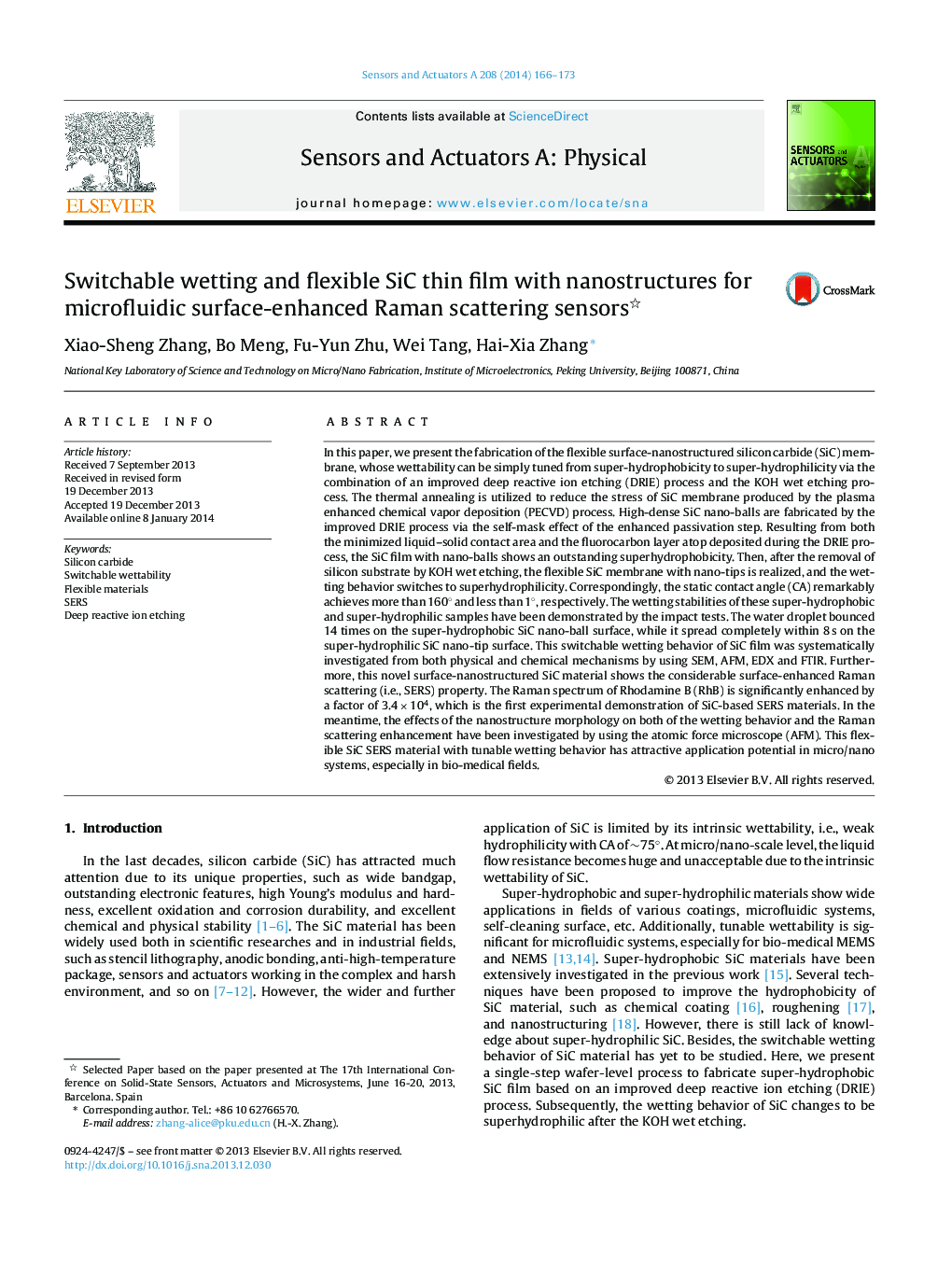| Article ID | Journal | Published Year | Pages | File Type |
|---|---|---|---|---|
| 739448 | Sensors and Actuators A: Physical | 2014 | 8 Pages |
•Flexible surface-nanostructured SiC film with switchable wetting behavior is presented.•The contact angle of super-hydrophobic SiC nano-ball surface achieves to higher than 160°.•The contact angle of super-hydrophilic SiC nano-tip surface reduces to below 1°.•The switchable wettability was systematically investigated from both physical and chemical mechanisms.•The first experimental demonstration of SiC-based surface-enhanced Raman scattering materials is presented.
In this paper, we present the fabrication of the flexible surface-nanostructured silicon carbide (SiC) membrane, whose wettability can be simply tuned from super-hydrophobicity to super-hydrophilicity via the combination of an improved deep reactive ion etching (DRIE) process and the KOH wet etching process. The thermal annealing is utilized to reduce the stress of SiC membrane produced by the plasma enhanced chemical vapor deposition (PECVD) process. High-dense SiC nano-balls are fabricated by the improved DRIE process via the self-mask effect of the enhanced passivation step. Resulting from both the minimized liquid–solid contact area and the fluorocarbon layer atop deposited during the DRIE process, the SiC film with nano-balls shows an outstanding superhydrophobicity. Then, after the removal of silicon substrate by KOH wet etching, the flexible SiC membrane with nano-tips is realized, and the wetting behavior switches to superhydrophilicity. Correspondingly, the static contact angle (CA) remarkably achieves more than 160° and less than 1°, respectively. The wetting stabilities of these super-hydrophobic and super-hydrophilic samples have been demonstrated by the impact tests. The water droplet bounced 14 times on the super-hydrophobic SiC nano-ball surface, while it spread completely within 8 s on the super-hydrophilic SiC nano-tip surface. This switchable wetting behavior of SiC film was systematically investigated from both physical and chemical mechanisms by using SEM, AFM, EDX and FTIR. Furthermore, this novel surface-nanostructured SiC material shows the considerable surface-enhanced Raman scattering (i.e., SERS) property. The Raman spectrum of Rhodamine B (RhB) is significantly enhanced by a factor of 3.4 × 104, which is the first experimental demonstration of SiC-based SERS materials. In the meantime, the effects of the nanostructure morphology on both of the wetting behavior and the Raman scattering enhancement have been investigated by using the atomic force microscope (AFM). This flexible SiC SERS material with tunable wetting behavior has attractive application potential in micro/nano systems, especially in bio-medical fields.
